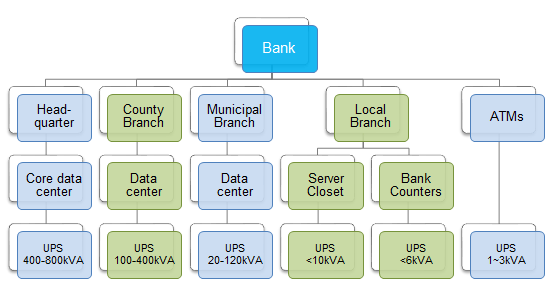Many companies are unprepared for business disruptions caused by power blackouts and are often unaware of the actual costs and impact that they can have on their operations. While the majority of power failures from national grids last only a few hours, some blackouts can last days or even weeks. This completely shuts down production at companies and critical infrastructures such as telecommunication networks, computing services, banking and financial services, water supplies and hospitals.
Need for Uninterruptible Power in Banking and Finance Sectors
The pivotal role that banking and the financial sectors plays in the economic growth and stability, both at national and individual level, requires continuous and reliable services. The finance industry requires enormous computing power to trade at high speed and frequency, to analyze and react to markets, and to provide customers with constant access to services and information.
In the modern society, banking and financial services are not only in the traditional way like bank branches or ATMs. As the intensive application of internet, call center banking, on-line banking and mobile banking are also popular and well accepted by customers. With more and more social media, like facebook, twitter, Linked-in, are prevailing in the cyber space, social media fund transfers are also set to grow nowadays.
However, IT-based financial services highly rely on solid infrastructure as the operation backbone. Each day, a staggering amount of new data must be generated, processed, acted upon, and stored. In a field notorious for high customer turnover, banks must provide optimal customer experience with minimal downtime in order to maximize retention.
Data Security in Cloud-based Applications

Consumers in this sector are especially sensitive to the perceived security of their data and the competence of institutions in safeguarding their personal information, so the minimization of downtime due to technical issues is doubly important.
While the ease of use in interacting with a cloud-based data center can seem effortless and almost magical for the end user; businesses who provide the experience know that cloud solutions require significant investments in hardware and operations in order to remain secure, reliable, and accessible at all times. The modern digital equipment employs microprocessors that run at frequencies of up to several gigahertz, carrying out millions of operations a second.
A disturbance to power delivery of only a few milliseconds can disrupt thousands of basic operations, potentially leading to malfunctions, corruption and data loss; and even hardware damage as is apparent from the IT ecosystem of banking, financial services and insurance (BFSI) sector.
UPS Protects the Critical Operations in Banking and Finance
UPS systems vary widely in size and function, from the smallest protecting a single computer or ATM to vast systems designed to protect large data centers. Some equipment can tolerate slight fluctuations, but significant deviation from this standard is often enough to cause damage to the sensitive components present in modern data systems in finance and banking companies. Finance segment needs to remain at the cutting edge of technology and business or risk rapid outpacing by their competitors.

There are three typical applications for UPS to be used in banking and finance sectors to protect the mission critical load –


